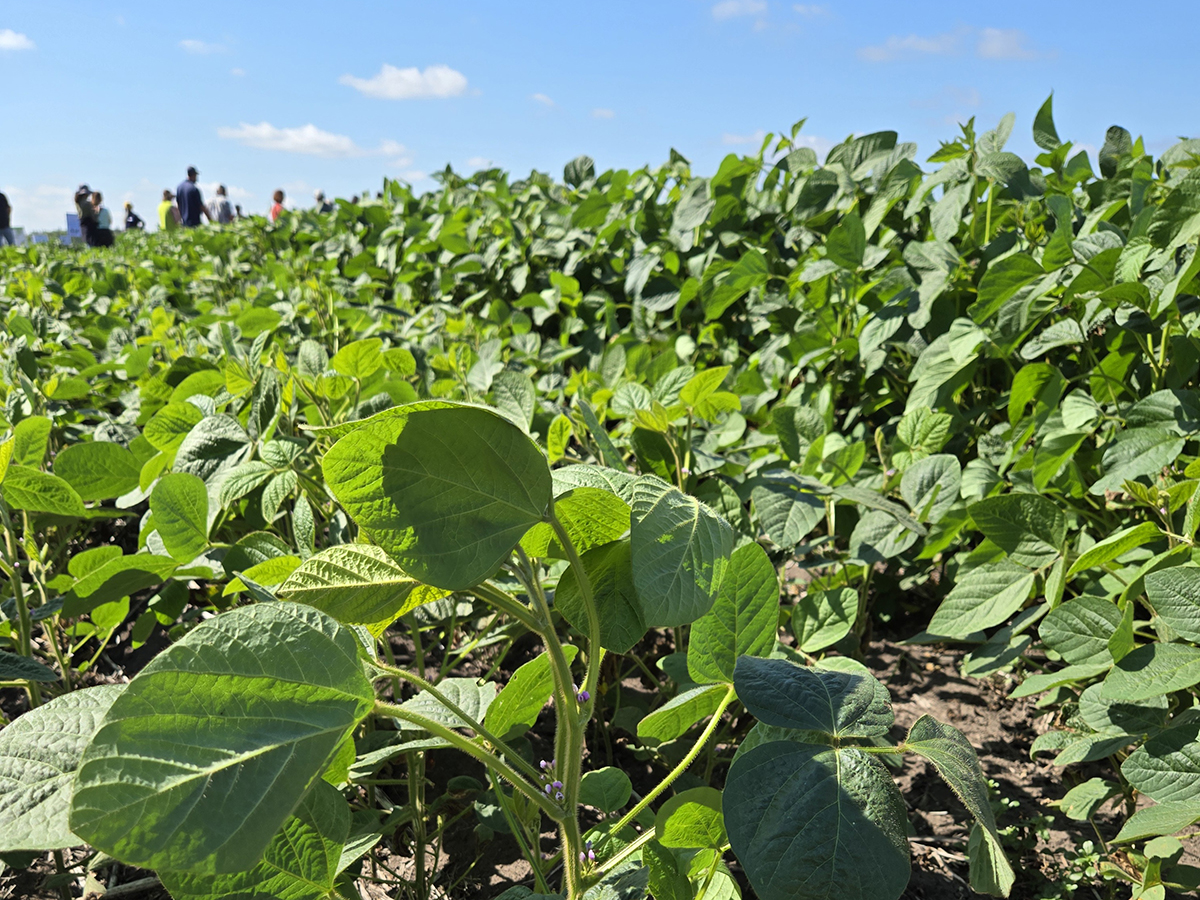Having grown up on a farm near Biggar in one of Saskatchewan’s driest regions, climatologist Elaine Wheaton knows first hand about the impact of drought on the Prairies.
She brings that background to her work at the Saskatchewan Research Council and as part of a new research team analyzing the physical characteristics and processes involved in droughts.
The drought research initiative, jointly led by scientists from the University of Saskatchewan and McGill University, will focus on the 1999-2004 drought and seek better ways to predict the next one.
Read Also

Spider mites big soybean problem this season
Spider mite issues have been geographically limited but significant where they occur, said John Gavloski, an entomologist with Manitoba Agriculture.
Wheaton said the study will examine how severe it was and what was affected in areas such as agriculture, tourism, wildlife and watersheds.
“We don’t know that much, we need to know more,” she said.
The five-year study, which will examine the structure of droughts, how they form, how they evolve and how they end, is a good start, she said.
“We’ll not get all the answers but it’s realistic and necessary to start answering some of the basic questions.”
The research will help climatologists and others predict when droughts are likely to occur and provide an early warning to farmers.
“We will be able to put plans into effect earlier and avoid some of the costs,” Wheaton said.
Network co-leader John Pomeroy of the University of Saskatchewan’s hydrology centre noted every major drought has been followed by some kind of response.
He cited the establishment of the Prairie Farm Rehabilitation Administration after the Dirty Thirties and improved farm management after the drought of the early 1920s.
Today’s technology will help researchers take their studies in a different direction than their predecessors, Pomeroy said.
The most recent drought was more severe than previous ones and covered a large area from British Columbia to Saskatchewan and into the United States and Mexico. It was considered the most expensive natural disaster in Canadian history, Pomeroy said.
Unlike previous droughts that were linked to changes in surface temperatures in the Pacific Ocean, this one was not.
“This one was different so our ability to predict it was difficult and non-existent.”
Pomeroy said scientists need to better understand drought, how it forms in the atmosphere and the conditions created on the surface.
The study will examine the types of interaction between the dry surface and dry atmosphere that feed continued droughts.
It will look at weather data, soil moisture, stream flows, cloud cover, atmospheric humidity, global circulation patterns and ocean temperature readings from satellites and weather stations during the last drought.
In addition to studying the processes influencing droughts, researchers will examine how long depleted water resources take to replenish.
Pomeroy hopes the work will improve future predictions of drought through modelling and computer simulations of weather, climate and hydrology.
“We need to be ready for the next one,” he said, noting the probability of a severe prairie drought occurring at least twice every 20 years.
When completed, the research will likely be a catalyst for changes in land management practices, Pomeroy said.
He noted how the impact of the most recent drought was minimized by the change to minimum till and zero till and more effective water management that caused less runoff to sloughs and streams.
The $3 million, five-year study is funded by the Canadian Foundation for Climate and Atmospheric Sciences, a non-profit organization funding university-based research on climate, atmospheric and related oceanic work in Canada.
Its 122 projects include research on forecasting weather in Arctic communities, tornadoes in Alberta and wave and wind conditions off the Nova Scotia coast.
Tim Aston, a science officer with the foundation, called the drought initiative an important study that involves a network of 30 researchers.
“The study will not solve the problem but if it can improve prediction techniques by 10 percent, that’s significant,” he said.














